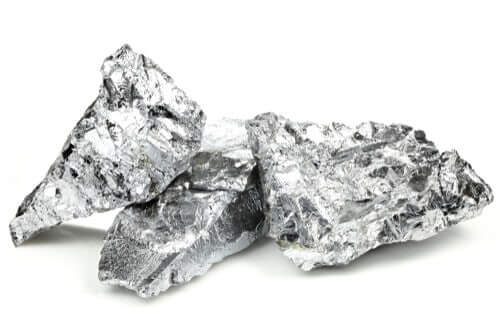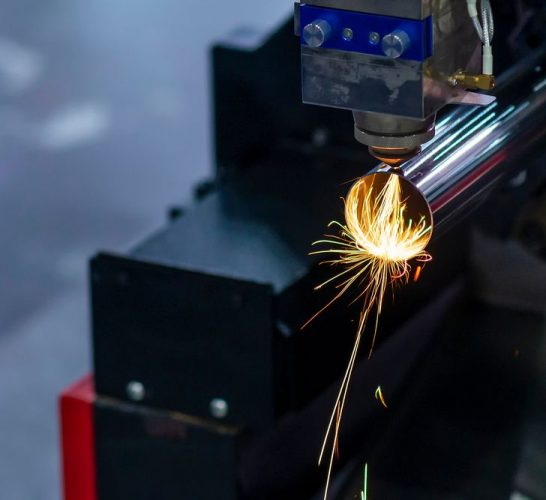Content Menu
● Understanding Tungsten Carbide: Composition and Structure
● Physical Properties Related to Mass
>> Density of Tungsten Carbide
>> Mass Calculation from Density and Volume
● Chemical and Mechanical Properties Influencing Mass
>> Composition and Alloying
>> Hardness and Strength
● Industrial Applications and Mass Considerations
>> Cutting Tools and Wear Resistance
>> Coatings and Composite Materials
● Advanced Manufacturing Techniques of Tungsten Carbide
● Environmental Impact and Recycling of Tungsten Carbide
● Innovations in Tungsten Carbide Composites
● Safety and Handling Considerations
● Future Trends and Applications
● Conclusion
● Frequently Asked Questions (FAQ)
>> 1. What is the molecular weight of tungsten carbide?
>> 2. What is the density range of tungsten carbide?
>> 3. How do you calculate the mass of a tungsten carbide object?
>> 4. Why is tungsten carbide used instead of pure tungsten?
>> 5. Can tungsten carbide be recycled?
● Citations:
Tungsten carbide (WC) is a remarkable inorganic compound composed of tungsten and carbon atoms in a 1:1 atomic ratio. It is widely recognized for its exceptional hardness, density, and durability, making it a critical material in industrial applications such as cutting tools, mining equipment, and wear-resistant coatings. Understanding the mass of tungsten carbide involves exploring its molecular weight, density, and how these properties relate to its physical and chemical characteristics.

Understanding Tungsten Carbide: Composition and Structure
Tungsten carbide is formed by bonding tungsten (W) and carbon (C) atoms in a hexagonal crystal lattice structure. The chemical formula is WC, indicating one atom of tungsten combined with one atom of carbon.
- Molecular Weight: The molar mass of tungsten carbide is approximately 195.85 g/mol, calculated from the atomic masses of tungsten (183.84 g/mol) and carbon (12.01 g/mol).
- Crystal Structure: WC crystallizes in a hexagonal lattice where tungsten and carbon atoms are tightly packed, contributing to its remarkable hardness and density.
Physical Properties Related to Mass
Density of Tungsten Carbide
Density is a key property that relates mass to volume. Tungsten carbide is known for its high density, which generally ranges between 13.4 and 15.6 grams per cubic centimeter (g/cm³) depending on its composition and manufacturing process.
- Pure tungsten carbide has a density close to 15.6 g/cm³.
- Variations in density occur due to different alloying elements and binders such as cobalt, nickel, titanium carbide, or tantalum carbide.
- For example, tungsten-cobalt (YG) grades vary from about 13.4 g/cm³ to 14.9 g/cm³ depending on cobalt content, while tungsten-titanium-cobalt (YT) alloys have lower densities, ranging from 11.0 to 13.2 g/cm³.
Mass Calculation from Density and Volume
The mass of a tungsten carbide object can be calculated using the formula:
Mass=Density×Volume
For example, a tungsten carbide sphere with a radius of 1 cm (volume ≈ 4.19 cm³) and density 15.6 g/cm³ would have a mass of approximately:
4.19cm3×15.6g/cm3=65.4g
Similarly, a 0.5-inch diameter tungsten carbide sphere weighs about 16.8 g, consistent with its density.
Chemical and Mechanical Properties Influencing Mass
Composition and Alloying
Tungsten carbide is rarely used in pure form due to its brittleness. It is often combined with metallic binders such as cobalt or nickel to improve toughness. These binders slightly reduce the overall density and mass of the composite material but enhance durability.
Hardness and Strength
- Tungsten carbide ranks 9 to 9.5 on the Mohs hardness scale, second only to diamond.
- It has a Young's modulus of about 530–700 GPa, indicating extreme stiffness.
- The material's ultimate compressive strength is approximately 2.7 GPa, making it highly resistant to deformation.
These properties ensure that tungsten carbide maintains its mass and structural integrity under high stress and temperature conditions.
Industrial Applications and Mass Considerations
Cutting Tools and Wear Resistance
Tungsten carbide's density and mass contribute to its effectiveness in cutting tools, drills, and mining bits. The high mass density allows tools to withstand abrasive wear and maintain sharpness longer than steel or other metals.
Coatings and Composite Materials
In coating applications, tungsten carbide powders with controlled particle size and density are used to create ultra-hard, wear-resistant surfaces. The mass of these coatings is carefully controlled during deposition processes like High-Velocity Oxygen Fuel (HVOF) spraying or Detonation Gun (D-Gun) spraying to optimize performance.
Advanced Manufacturing Techniques of Tungsten Carbide
Tungsten carbide is manufactured through several advanced techniques that influence its final properties, including mass and density. The most common method is powder metallurgy, where tungsten and carbon powders are mixed, pressed, and sintered at high temperatures to form a dense, solid material.
- Sintering Process: This involves heating the compacted powder below its melting point, allowing particles to bond without liquefying. The sintering temperature and time affect the grain size and density, which in turn influence the mass and mechanical properties.
- Hot Isostatic Pressing (HIP): This technique applies high pressure and temperature uniformly, reducing porosity and increasing density, resulting in a heavier and stronger tungsten carbide product.
- Chemical Vapor Deposition (CVD): Used for coating applications, CVD deposits tungsten carbide layers on substrates, controlling thickness and mass precisely.

Environmental Impact and Recycling of Tungsten Carbide
Tungsten carbide's production and disposal have environmental implications. Recycling tungsten carbide is crucial for sustainability due to the scarcity and cost of tungsten.
- Recycling Methods: Mechanical recycling involves crushing and reprocessing scrap, while chemical recycling recovers tungsten and cobalt through chemical treatments.
- Environmental Benefits: Recycling reduces mining activities, lowers energy consumption, and minimizes waste.
Innovations in Tungsten Carbide Composites
Recent research focuses on enhancing tungsten carbide composites by incorporating nanomaterials and alternative binders to optimize mass, strength, and wear resistance.
- Nanostructured WC: Nanoparticles improve hardness and toughness without significantly increasing mass.
- Alternative Binders: Using binders like nickel or iron can adjust density and mechanical properties for specialized applications.
Safety and Handling Considerations
Handling tungsten carbide requires safety precautions due to its hardness and potential dust hazards during machining.
- Dust Control: Proper ventilation and protective equipment prevent inhalation of fine particles.
- Machining Safety: Specialized tools and techniques are necessary to avoid tool wear and operator injury.
Future Trends and Applications
Tungsten carbide continues to evolve with emerging applications in aerospace, medical devices, and electronics, where precise control of mass and material properties is critical.
- Aerospace: Lightweight tungsten carbide composites improve fuel efficiency and durability.
- Medical Devices: Biocompatible coatings and tools benefit from tungsten carbide's hardness and wear resistance.
- Electronics: Thin films and coatings enhance device performance and longevity.
Conclusion
The mass of tungsten carbide is fundamentally tied to its molecular weight and density, both of which are influenced by its chemical composition and manufacturing process. With a molar mass of approximately 195.85 g/mol and a density typically around 15.6 g/cm³, tungsten carbide is a dense, hard, and durable material widely used in industrial applications requiring wear resistance and toughness. Variations in alloying elements and binders affect its density and mass, allowing customization for specific uses. Understanding these properties is essential for engineers and manufacturers to optimize tungsten carbide's performance in cutting tools, coatings, and other high-demand environments.

Frequently Asked Questions (FAQ)
1. What is the molecular weight of tungsten carbide?
The molecular weight of tungsten carbide (WC) is approximately 195.85 g/mol, derived from tungsten (183.84 g/mol) and carbon (12.01 g/mol).
2. What is the density range of tungsten carbide?
Tungsten carbide's density ranges from 13.4 to 15.6 g/cm³, depending on its composition and binder content. Pure WC is near 15.6 g/cm³, while alloys with cobalt or titanium carbide have lower densities.
3. How do you calculate the mass of a tungsten carbide object?
Mass can be calculated by multiplying the density of tungsten carbide by the object's volume:
text{Mass} = text{Density} times text{Volume}
For example, a 1 cm³ volume of WC with density 15.6 g/cm³ has a mass of 15.6 g.
4. Why is tungsten carbide used instead of pure tungsten?
Tungsten carbide is harder and more wear-resistant than pure tungsten, making it better suited for cutting and abrasive applications. However, it is more brittle, so binders like cobalt are added to improve toughness.
5. Can tungsten carbide be recycled?
Yes, tungsten carbide is recyclable. Scrap and worn-out tools can be processed to recover tungsten and cobalt, reducing waste and conserving resources.
Citations:
[1] https://en.wikipedia.org/wiki/Tungsten_carbide
[2] https://www.wolframcarbide.com/tungsten-carbide-density-and-uses-of-different-cemented-carbide-grade-yg6a/
[3] https://www.allied-material.co.jp/en/techinfo/tungsten_carbide/features.html
[4] https://www.britannica.com/science/tungsten-carbide
[5] https://eternaltools.com/blogs/tutorials/tungsten-carbide-an-informative-guide
[6] https://www.retopz.com/57-frequently-asked-questions-faqs-about-tungsten-carbide/
[7] https://www.reddit.com/r/AskScienceDiscussion/comments/4ds8mb/how_do_you_determine_the_weight_of_a_tungsten/
[8] https://www.boyiprototyping.com/materials-guide/density-of-tungsten/
[9] https://www.reddit.com/r/askscience/comments/30895e/tungsten_carbide_tungsten_sphere_and_cube_weight/
[10] https://www.zzbetter.com/new/Density-of-Tungsten-Carbide.html
[11] https://www.linde-amt.com/resource-library/articles/tungsten-carbide
[12] https://cowseal.com/tungsten-vs-tungsten-carbide/
[13] https://www.convertunits.com/molarmass/Tungsten+Carbide
[14] https://www.webqc.org/molecular-weight-of-tungsten+carbide.html
[15] https://pubchem.ncbi.nlm.nih.gov/compound/tungsten_carbide
[16] https://hpvchemicals.oecd.org/ui/handler.axd?id=ed1c76bf-dad9-4baa-8d1b-70fed7f92862
[17] https://www.sciencedirect.com/topics/chemistry/tungsten-carbide
[18] https://www.thermofisher.com/order/catalog/product/012482.36
[19] https://cowseal.com/tungsten-vs-tungsten-carbide/
[20] https://carbideprocessors.com/pages/carbide-parts/tungsten-carbide-properties.html
[21] https://www.nature.com/articles/srep01646
[22] https://pubchem.ncbi.nlm.nih.gov/compound/12070-13-2
[23] http://www.tungsten-carbide.com.cn/tungsten-carbide-properties.html
[24] https://www.azom.com/properties.aspx?ArticleID=1203
[25] https://www.usgs.gov/centers/national-minerals-information-center/tungsten-statistics-and-information
[26] https://tuncomfg.com/about/faq/
[27] https://www.thermalspray.com/questions-tungsten-carbide/
[28] https://www.vedantu.com/chemistry/tungsten-carbide
[29] https://shop.machinemfg.com/the-pros-and-cons-of-tungsten-carbide-a-comprehensive-guide/
[30] https://www.zzbetter.com/new/The-Density-of-Tungsten-Carbide.html
[31] https://www.aemmetal.com/news/tungsten-vs-tungsten-carbide-guide.html
[32] https://www.tungco.com/insights/blog/frequently-asked-questions-used-tungsten-carbide-inserts/
[33] https://www.mttm.com/customer-resources/weight-calculator
[34] https://www.carbidetek.com/faqs/
[35] https://www.generalcarbide.com/wp-content/uploads/2019/04/GeneralCarbide-Designers_Guide_TungstenCarbide.pdf
















